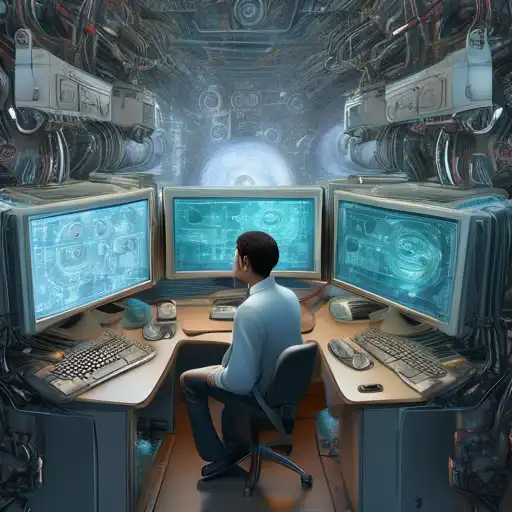Introduction to Computer Vision
Computer vision is a field of artificial intelligence that trains computers to interpret and understand the visual world. By leveraging digital images from cameras and videos and deep learning models, machines can accurately identify and classify objects—and then react to what they "see."
The Science Behind Computer Vision
At its core, computer vision involves the automatic extraction, analysis, and understanding of useful information from a single image or a sequence of images. It involves the development of a theoretical and algorithmic basis to achieve automatic visual understanding.
Key Technologies in Computer Vision
- Image Classification: Identifying what an image represents.
- Object Detection: Locating objects within an image.
- Object Tracking: Following an object's movement over time.
- Facial Recognition: Identifying or verifying a person from a digital image or video frame.
Applications of Computer Vision
Computer vision is used in a variety of applications, from enabling self-driving cars to interpret their surroundings, to helping doctors diagnose diseases from medical imaging, and even in retail for inventory management.
Revolutionizing Industries
From healthcare to automotive, computer vision is transforming industries by providing machines with the ability to see and understand the world around them. This technology is not just about replacing human vision but enhancing it, offering new perspectives and capabilities.
Challenges and Future Directions
Despite its advancements, computer vision faces challenges such as understanding context, recognizing objects in varying conditions, and processing images in real-time. However, with the continuous improvement in machine learning algorithms and computational power, the future of computer vision looks promising.
Ethical Considerations
As computer vision technologies become more pervasive, ethical considerations such as privacy, bias, and misuse come to the forefront. It's crucial for developers and policymakers to address these issues to ensure the responsible use of computer vision.
Conclusion
Computer vision is a rapidly evolving field that is teaching machines to see and interpret the world in ways that were once the domain of humans alone. As technology advances, the potential applications of computer vision are boundless, promising to revolutionize how we interact with the world around us.
